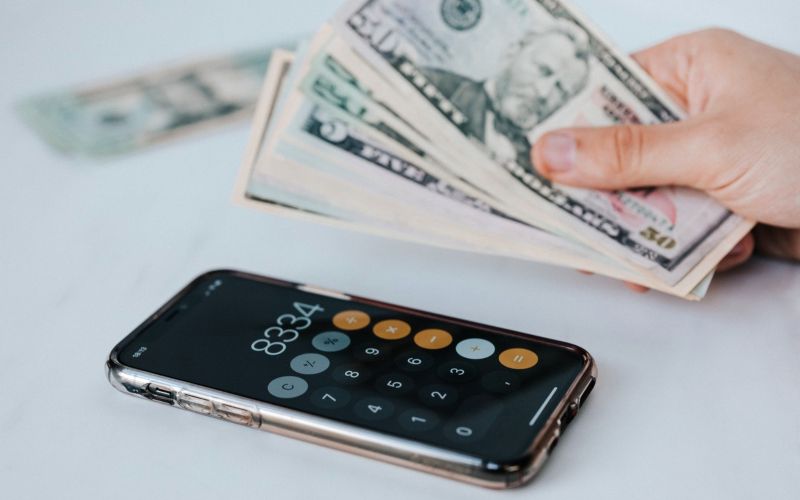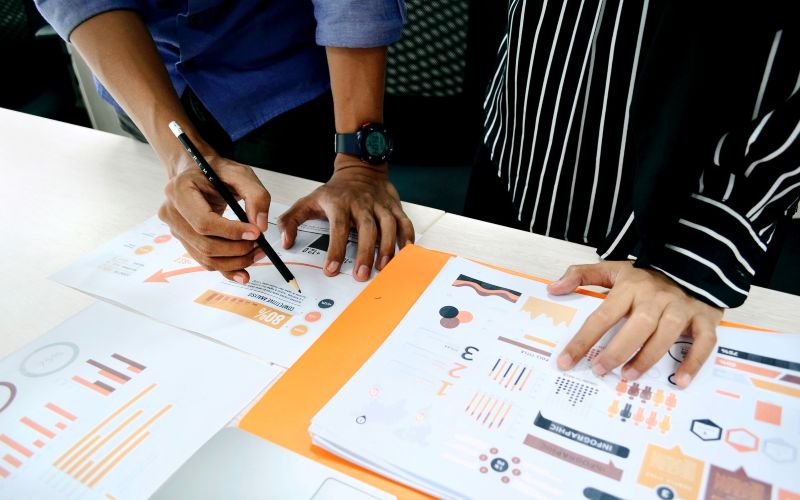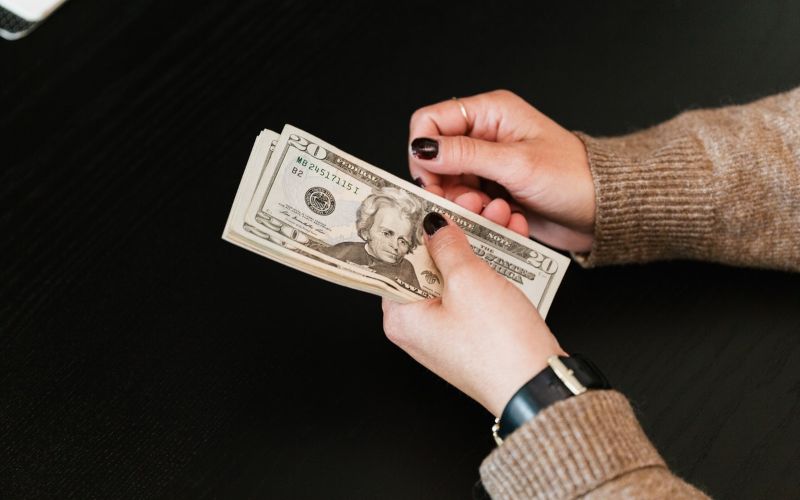T-shirt businesses are among the top five most successful businesses that don’t require a large investment to get it started. There are advantages to selling directly to customers, and you may even save a lot of money by opening an online e-commerce shop. That said, you’ll want to consider a good profit margin when it comes down to building your business model.
When employing markup as a pricing strategy, numerous factors must be considered, including exclusivity, operational expenditures, and overhead costs. A good markup price varies from 30% to 40%. Remember that your profit margin may differ from another merchant selling identical clothing.
After subtracting your expenditures, a 30-40% gross profit margin will offer you a net profit of 12-15 percent on average. On the other hand, the markup will differ from one product to the next. After removing all expenses, a new business must determine if its markup will generate a profit. With that in mind, let’s consider what should be measured when determining the best profit margins.
Good Profit Margins For A T-shirt Business

Your earnings will be influenced by two factors: expenses and pricing tactics. In an ideal world, you’d produce enough money to assure a steady income and outperform the competitors.
That said, if you’re a designer who wants to manufacture their own gear but isn’t sure how to price it, you’ve come to the right location to figure out where you should stand in the profit margin. So, starting with expenses, here’s what to consider.
Costs To Consider
Several independent T-shirt businesses sell everything from hilarious tees to personalized shirts for special events. You may believe that starting a T-shirt business requires a large sum of money, yet it is feasible to establish a T-shirt business on a shoestring budget. Some choices even allow you to profit without worrying about shirt printing or shipping.
When determining a decent markup pricing for your goods, the first thing to remember is that your markup is not a profit of 100 percent. It would be best to examine the expense of conducting business as a T-shirt merchant.
- Consider what the rentals may be (if any). If you have a fashionable T-shirt store on the beach, your rent may be significantly more than in a strip mall. However, if you’re online, you must include the cost of developing, hosting, and maintaining the website and any service costs for credit or debit card swipes.
A website is an excellent place to sell T-shirts with that in mind. It is unnecessary to spend a lot of money or time creating your own website. Consider using a low-cost online e-commerce platform like Shopify, which lets you create your own website for a monthly charge.
Most e-commerce platforms offer free or low-cost templates that make dragging and dropping your designs into the internet a breeze.
- The next step in determining a successful retail price for your items is determining the production cost. The costs of manufacturing are influenced by several factors that range from one product to the next.
For example, suppose you’re starting a custom t-shirt website. In that case, production expenses will include the price of stocking blank t-shirts, the cost of heat transfer vinyl, ink, and other machinery supplies, as well as packing and delivery. You’ll be able to price your products for what they’re worth after you understand the costs involved.
Consider Doing A Competitive Analysis

T-shirt manufacturing is a very competitive industry. You must identify your specialty to be successful. You could be able to sell to churches, fraternities, sports teams, or businesses. It makes no difference what your concentration is as long as you stick to it. You risk having boxes of T-shirts collecting dust in your garage if you don’t.
Furthermore, you should conduct market research to determine the perceived worth of your shirt, which involves learning what customers are willing to pay and what your competitors are charging for the same thing. Examine national, regional, and local t-shirt stores to estimate the minimum and maximum price that people will spend on your shirt.
Your competitive analysis should identify your business’s indirect and direct competitors, with the latter receiving the most attention.
- Other t-shirt businesses are direct competitors.
- Customers have alternative possibilities for purchases that aren’t direct rivals, such as indirect competitors. Other forms of shirts and clothes are included in this category.
It would be best to provide an overview of each competitor’s business and a list of their strengths and flaws. It will be hard to know everything there is to know about your competition unless you have already worked for them. However, you should be able to learn important details about them, such as:
- What services do they provide?
- What sorts of customers do they serve?
- What kind of pricing do they have (premium, inexpensive, etc.)?
Documenting your areas of competitive advantage is the final portion of your competitive analysis section. Consider the following scenario:
- Will you provide high-quality t-shirts?
- Will you provide t-shirt designs that your competitors do not?
- Are you going to give your customers better service?
- Will you lower your prices?
Consider how you can exceed your competitors and write them down in this portion of your plan. Examining your market competition is an excellent approach to get a rough sense of what your retail price should be. Observing how a competitor t-shirt brand prices its shirts can offer you a sense of what the market is prepared to pay—assuming they’re successful.
Anyone may set a t-shirt’s price at $150 and “sell” it on the internet, but that doesn’t imply anyone will purchase it. This isn’t to mean you should merely charge the same price for your t-shirts as your competitors, but it is crucial to consider what others charge for their goods when persuading buyers to select you.
Consider The Equation To Calculate Your Pricing
Once you’ve estimated your t-shirt cost, you may utilize it to generate pricing based on your target profit %. According to an Entrepreneur article, most merchants aim for a profit margin of around 50% as it exists slightly higher than the 30% and 40% ‘good’ profit margin.
Using the 50% margin, you must multiply your manufacturing cost by two to get your retail price. If you want to strive for a different profit margin %, apply this formula: Your Price = [(cost to produce) ÷ (100-profit %)] x 100
So, let’s assume you want to make a 40% profit margin on a shirt that costs $10.00 to make. In such a case, your formula would be as follows:
Your Price = [(10.00) ÷ (100–40)] x 100
Your Price = [10.00 ÷ 60] x 100
Your Price = 0.17 x 100
Your Price = $17
Isn’t it simple enough? Now that we’ve mastered the quantitative side let’s delve into some psychology.
Consider How Buyers Would React To Your Price
This next truth might be one of the most significant and underappreciated aspects of product price. The reality is that people do not always act sensibly.
Pricing a product would be extremely formulaic if consumers always responded logically. You might enter your costs into a formula, arrive at a price that most people would accept, and begin selling. However, humans are emotional, and whether you like it or not, your product’s pricing will elicit an emotional response from your buyers.

Great pricing will consider human behavior and emotion to discover a sweet spot where customers will pick your t-shirts. In light of that, consider the following three fast pricing strategies to help you optimize your price for emotion over logic:
1. Instead of a zero or a five, end your pricing with a non-round number. It is because people become sluggish when reviewing information to make a decision. Even though the difference between $30 and $29 is only $1, it seems larger than it is. And we’ll make choices based on how we feel.
2. Group products together and provide a discount, rather than selling each of your items separately. Let’s say you’re offering three distinct $20 shirts. Consider making the shirts available for a total of $55 if you buy them all together. Some t-shirt shops offer a package of four t-shirts for $100 (or $25 each), rather than the usual $28 per shirt.
This package also gets additional points for focusing on a single subject or idea, as they do. Several articles have been written about how bundling generates sales, so let me give you the short version: it works when it’s done properly. With less work, you’ll sell more t-shirts, and your consumers will save money—a win-win situation.
The key to bundling is to ensure that each product may also be purchased alone. Some buyers may just require one item, which is perfectly acceptable. Furthermore, presenting items separately allows customers to realize the value of purchasing a combined package.
3. Incorporate anchor pricing into your strategy. It entails presenting the initial price, followed by the price you’ll be charging for it. Huckberry, an online menswear marketplace, is one firm that excels at this. They can provide special deals to their clients due to their business agreements.
Traditional retail for the S/S Breton Shirt is around $55.00. Huckberry, on the other hand, has it for around $44.98. It indicates that you’re receiving a deal that you won’t find anywhere else. (Notice how their pricing isn’t a round figure, either!) Anchor pricing can also be used in conjunction with the package strategy.
So, by using the previous example, three t-shirts would cost $60 if purchased separately, but you produced a bundle for $55. As an example, your product page may look like this: $55 – $60
As a result, the consumer understands the value of the deal and how much money they are saving.
Types Of Methods For T-Shirt Printing
Whether you print your own shirts or employ a wholesale manufacturer, there are various options for printing your designs on tees. Your company strategy and the amount of money you are willing to invest in equipment determine your chosen approach.
- For transferring graphics on shirts, screen printing is a popular process. However, owing to the time-consuming initial setup, you can only obtain decent deals from screen printers if you buy in volume. It is a high-quality printing method for intricate patterns or designs with many colors.
- Heat Transfer Vinyl. You print your patterns on transfer paper and use heat to transfer them to your shirts via the heat transfer process. Customized single-print designs are possible with this approach.
The disadvantage is that if you want to do it yourself, you’ll need to invest in professional heat press equipment, which may cost anywhere from hundreds to thousands of dollars. In addition, the printing’s durability and quality are worse than with other processes.
- Direct-to-Garment. Your design is printed straight onto the T-shirt, similar to how a standard printer works. The key benefits include printing in any color, high-quality designs, and inexpensive minimum order numbers. A manufacturer that adopts this method is unlikely to provide bulk discount prices.
Using A Print-on-Demand T-Shirt Service
Make, sell, and distribute your shirts using a print-on-demand service like Zazzle, CafePress, or Society6. These services allow you to design tees, sell them through an e-commerce site, and profit without worrying about printing or shipping. Once your company is established, you may invest in the appropriate equipment to print your own shirts and increase your profits in the long term.
The T-shirt Business: How Much Money Can You Make?

You may make an estimated $100,000 per year if you acquire orders regularly and employ a high-quality machine to create t-shirts. However, when you first start your firm, you may not be able to make as much. It’s a rough calculation if your company has reached a certain level of maturity.
1. Estimated Sale Price
A one-piece 100 percent cotton t-shirt varies from $5 to $9, depending on quantity, quality, and color. The machine will take roughly 30 minutes to print 72 t-shirts if you place an order for them. You may charge at least $8 for each piece for a six-color t-shirt, bringing in $576.
2. Cost Estimation
Let’s speak about the pricing of 72 t-shirts now. For example, 72 shirts will set you back $144, or $2 per shirt if you buy in bulk. The entire cost of the screen-making materials would be $21. For 30 minutes of operation, you would need to spend $3.60 on ink and $1 on lighting and power. The total price would be $169.6.
3. Profit Estimation
In sum, $169.6 would be required to create 72 t-shirts. You’ll make roughly $406 in profit, and it’ll take you about 2 hours to complete. No employment will pay such a high wage for only 2 hours of work every day. If you get orders like this every day, you’ll make $10,150 per month and $100,000 or more per year.
Custom T-shirts: How Much Money Can You Make?

To put it simply, you can have as much as you want. Your earnings will vary depending on the kind of business you have, how much time you have, and how much effort you put in. The following are some of the factors that influence your earnings:
- What is the number of hours you work on the production each week?
- Who do you sell your products to?
- What is the amount of money you wish to make?
So, in general, the more work you put into the business, the more profit you will reap. Only the sky is the limit here.
You may either conduct your business online or rent a retail location. Furthermore, you may sell t-shirts in quantity at affordable costs or in small numbers at high prices. You have an option, and the outcome will be determined by it.
Conclusion
After subtracting your expenses, a 40-60% gross profit margin will provide you with 12-15 percent net profit. On the other hand, the markup will differ from one product to another.
T-shirts with popular designs, for example, can be sold at a more premium price, and discounts might be needed to move less popular shirts from your inventory. A lot goes into properly pricing things, creating sales, and profiting from your online business.
Overall, I hope this gave you a general notion of how to price your t-shirts for online sales. So, figure out your manufacturing expenses, do market research, and decide on an appropriate profit margin. Then, to determine reasonable rates and increase product sales, you must first understand price psychology.
Bryan E. Robinson is the former owner of TshirtGrowth. He has sold t-shirts since 2006 through dropshipping, screen printing, vinyl printing, DTG, Print on Demand, and more. Bryan has created his own t-shirt designs through Photoshop, Canva, and other platforms, as well as worked with freelancers to create many of his designs. Besides t-shirts, Bryan has over 18 years of experience in online marketing with eCommerce, B2B SaaS, B2C products, and more.


